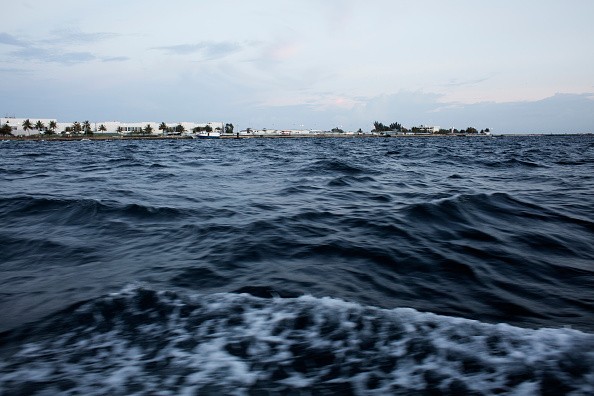In a year defined by record-breaking wildfires, terrible heat, and catastrophic water shortages, California politicians warn the state cannot afford to overlook another - seemingly distant but equally urgent - climate catastrophe: sea-level rise.

Subject of Many Legislation
This often-overlooked issue is the subject of more than a dozen new legislation and resolutions introduced this year, a stunning political awakening sparked by years of study and fragmented efforts around the state to preserve the California coast above water.
Senate Bill 1 is the first bill introduced in this parliamentary session, and it tackles sea level rise adaptation front on. Another bill offers a novel buyout scheme that would pave the way for a new, more proactive approach to the difficult decisions that have long prevented coastal towns from taking critical action.
Taking Rising Water Levels Seriously

These ideas represent a change in how authorities deal with the social, economic, and environmental challenges hanging over the state's deteriorating coastline. According to experts, this surge of political interest-and willpower-could not have come at a better time.
Rising water is already flooding houses across the state. Major highways, electricity lines, and other essential infrastructure are dangling dangerously near the water's edge. By 2050, at least $8 billion in property might be flooded, with another $10 billion in danger at high tides.
The water might rise more than half a foot in the next decade, with intense storms and El Nio cycles expected to exacerbate the problem.
Read also: New Device Can Make Seawater Drinkable in Minutes: Can it Solve World's Freshwater Shortage?
Urgency
In a recent study, legislative experts said that any action-or lack thereof-within the next ten years may determine the fate of the California coast. If business continues and global temperatures continue to increase, more than $150 billion in property across the state might be at risk of flooding by 2100.
"California's coast's future is in peril... We must not ignore scientists or bury our heads in the sand at this moment. "Toni Atkins, a San Diego Democrat, is the California Senate President Pro Tem, and her bill, SB-1, clears legal and logistical hurdles that have made large-scale planning a nonstarter in the past.
Budget
The bill, which has seven co-authors, also offers a large sum of money: $100 million per year for sea-level rise adaptation, plus additional funds for coastal areas disproportionately affected by pollution and industrialization.
"It's easy to overlook a problem until it becomes a catastrophe," Atkins added. "However, if we do nothing now, taxpayers, homeowners, companies, local communities, and the state will suffer significant losses in just a few years."
Take, for example, seawalls. While they successfully preserve seaside houses and infrastructure in the near term, they obstruct sand erosion and replenishment, drowning beaches until they shrink or disappear entirely.
Moving People
Managed retreat, or moving houses and vital infrastructure away from the shore to create room for the next few decades of sea-level rise, has also proved problematic. Again, this approach appears to be the most cost-effective and forward-thinking, but the practical problems of converting short-term objectives (protecting property values) into long-term plans (moving out of harm's way before the water arrives) have proven to be a political quagmire.
A revolving-loan scheme proposed by state Sen. Ben Allen, a Santa Monica Democrat, is one innovative concept that has lately arisen. Senate Bill 83 effectively proposes allowing local governments to purchase buildings at risk of being flooded in the next decade or two and then rent them out at market value to recuperate the expenses.
Then, when the time comes, the city might destroy the home and repurpose the site as a public park or a natural barrier against the sea.
This optional scheme would allow homeowners to move on their timetables, selling their seaside homes while still valuable. As a result, taxpayers will not be saddled with the astronomical expenditures of cleaning up after a disaster. According to studies, every dollar invested in buying or destroying flood-prone properties saves society $6 in averted expenses before tragedy strikes.
Uncharted Waters

Much of it is unexplored territory. Allen and his team didn't have any case studies to base this program on, so they turned to UCLA academics, coastal planners, and their Sacramento colleagues, who helped clarify the bill's specifics during congressional hearings this year. So far, the idea has attracted bipartisan support and no formal opposition.
For more environmental news, don't forget to follow Nature World News!
© 2026 NatureWorldNews.com All rights reserved. Do not reproduce without permission.





